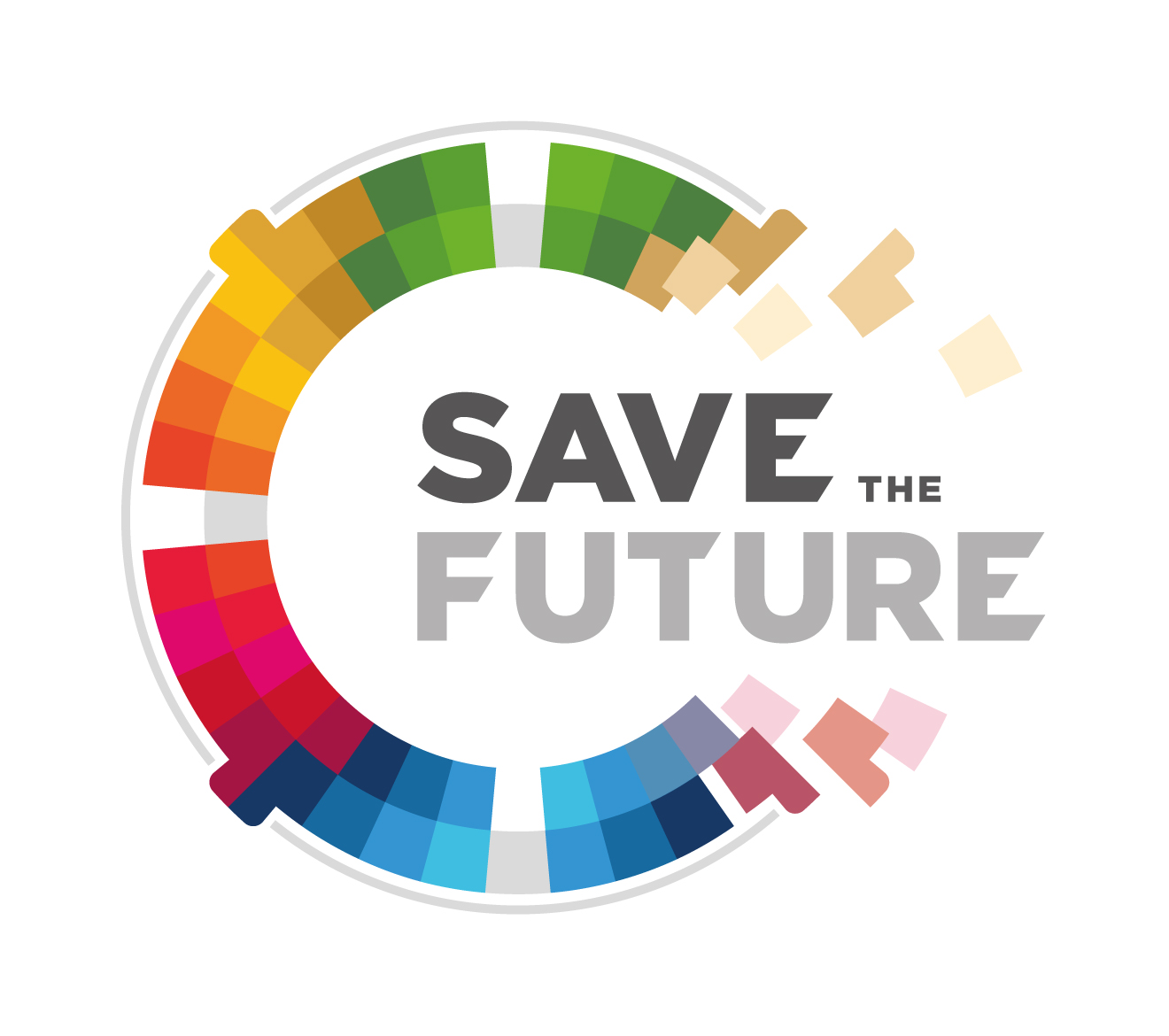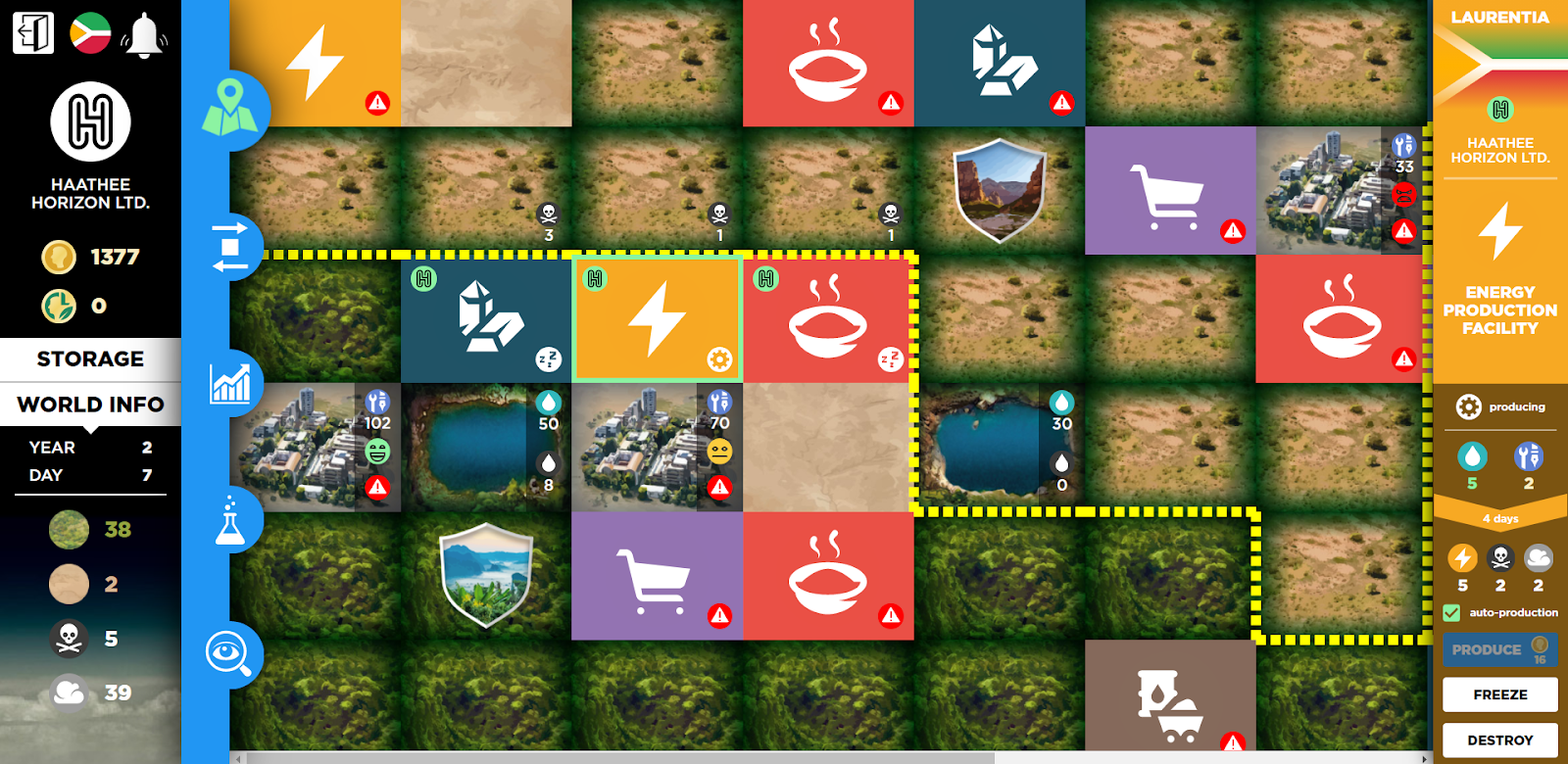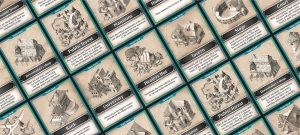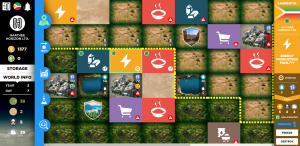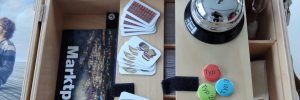Gameplay
Each player enters the game as one of three possible roles: a businessperson, an investor, or a government official, in one of three available countries: Kenorland, Laurentia, or Vespugia.
The game’s interface (Fig. 1) is vertically divided into two parts. On the left, a narrow bar features the player’s avatar and nickname, the amount of money owned, and general information about the in-game world, such as elapsed time, the state of resources, the level of pollution, greenhouse gas concentration, etc. Another narrow bar on the right shows the player’s country, as well as additional, business-related information. In between the two bars, about three fourths of the screen is taken up by a horizontally scrollable map of the world with clearly visible borders between the countries.
The map is divided into small rectangles. Each rectangle represents one of the following elements: a city, a production facility, a natural area, or a wasteland. Some elements include various status icons. For example, every city has icons indicating its level of workforce potential and well-being. Workforce potential is generated when city inhabitants consume resources. As resources get consumed, workforce potential increases and can be used to generate more resources.
Each country also has one freshwater reservoir. The reservoir bears two numbers: one indicating how much of the water is currently available, and another showing the level of water pollution.
The game is played in real time. However, its passage is accelerated so that 30 minutes in the game are roughly equivalent to a full year in the real world. This conversion rate can be adjusted in the settings.
The player starts with a set amount of money and resources. He or she can interact with the rectangles by clicking or tapping them on the map.
There is a range of production facilities that business owners can set up: Fossil Fuels Production Facilities, Food Production Facilities, and more. Each has a specific impact on the society and environment. Business owners can observe it in real time by following the indices in the left bar, as well as by looking at status icons in the rectangles.
A business owner can also enter the stock market by clicking an appropriate icon adjacent to the left bar. There, he or she can issue stocks. These, in turn, can be bought by investors. After a game’s year has elapsed, businesspeople may choose whether to pay dividends to the investors or not. However, they risk their reputation if they fail to do so or if the dividends are considered too small.
At one point during the game, the moderator informs players about the possibility of introducing an alternative, green currency. It can be implemented by a government official. Since it is designed to incentivize and penalize particular actions, the government official first sees a detailed list of all such actions, for example: natural area restoration, greenhouse gas emission, building a polluting facility, building a clean tech facility, and others. Then, he or she must set rewards or fines for each. Rewards should be declared in positive numbers, while fines should be less than or equal to zero. Once the new currency is introduced, the old one still remains in circulation, but one significant advantage of the former is that it can be used to pay taxes at the end of each year.
Context
Sustainable vs unsustainable economic development. The game was developed as part of the Deep Demonstration of Long-Termism project, in collaboration with Climate-KIC, Culture Initiative, Dark Matter Labs, Edgeryders, ETH: Eidgenössische Technische Hochschule Zürich, IOTA, Red Cross Red Crescent Climate Centre, Finland Futures Research Centre (FFRC) – University of Turku, 2degrees Investing. The project is supported by EIT Climate-KIC, EIT is a body of the European Union.
Target group
Benefits
The simulation is designed to test the feasibility of using alternative currencies as a method for driving business toward sustainable economy and long-term thinking.
Created by
Type
Price
Number of players
Number of moderators
Duration
Languages
Technical requirements
Computer / tablet / mobile phone for every player, with internet access & browser installed.
Supported browsers:
IE 11+
Edge 12+
Firefox 27+
Chrome 30+
Safari 7+

